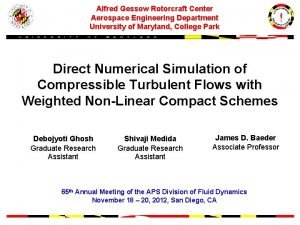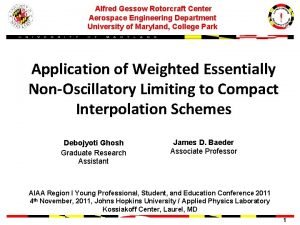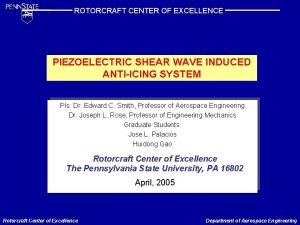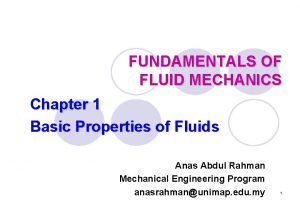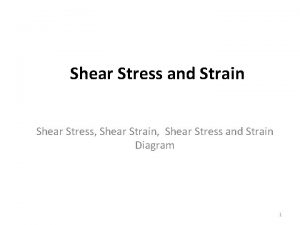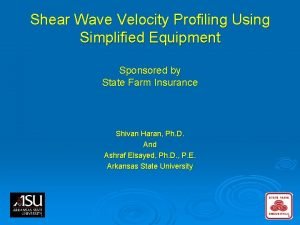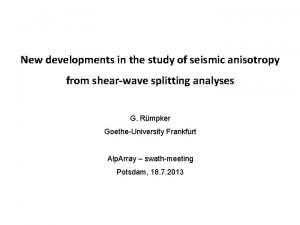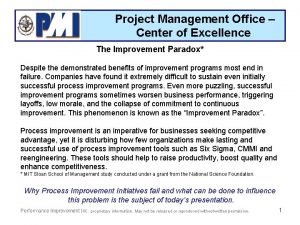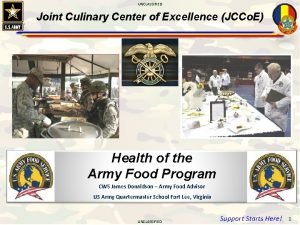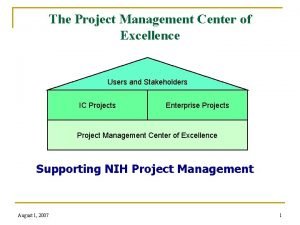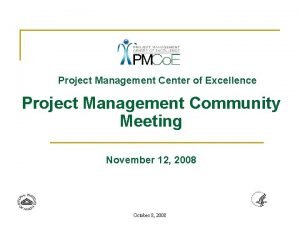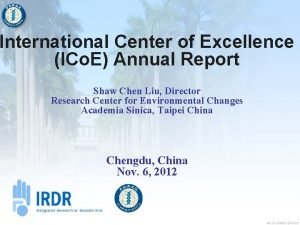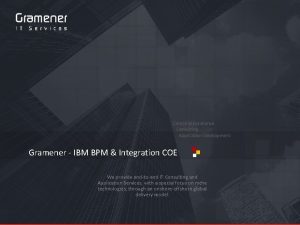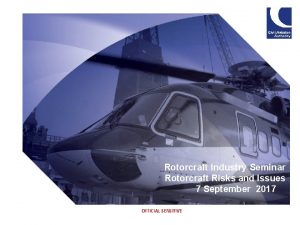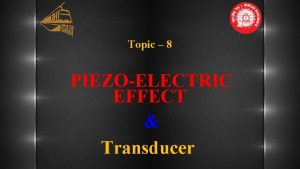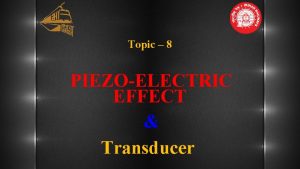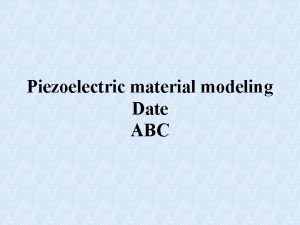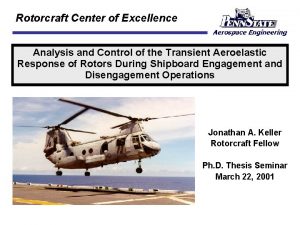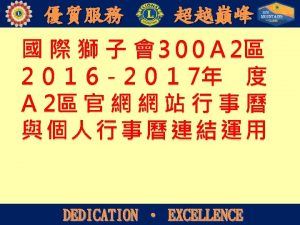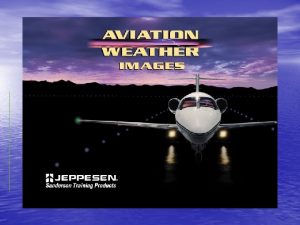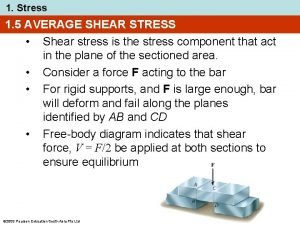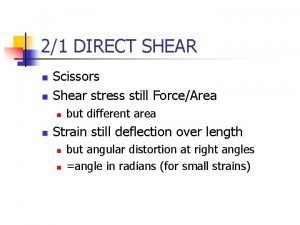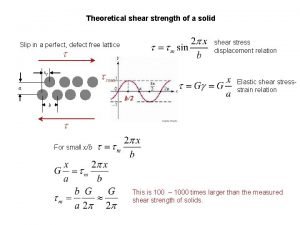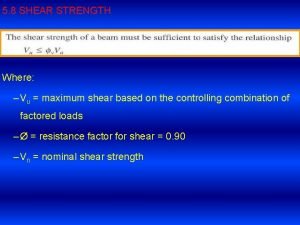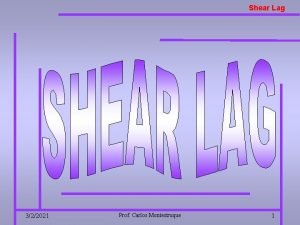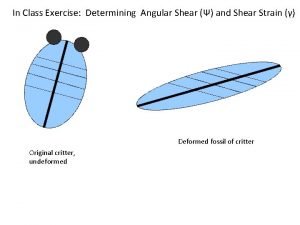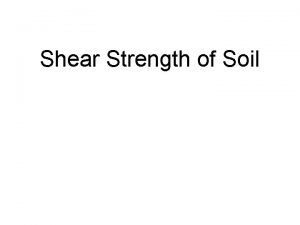ROTORCRAFT CENTER OF EXCELLENCE PIEZOELECTRIC SHEAR WAVE INDUCED

















- Slides: 17

ROTORCRAFT CENTER OF EXCELLENCE PIEZOELECTRIC SHEAR WAVE INDUCED ANTI-ICING SYSTEM PIs: Dr. Edward C. Smith, Professor of Aerospace Engineering Dr. Joseph L. Rose, Professor of Engineering Mechanics Graduate Students: Jose L. Palacios Huidong Gao Rotorcraft Center of Excellence The Pennsylvania State University, PA 16802 April, 2005 Rotorcraft Center of Excellence Department of Aerospace Engineering

Background • Liquid Water Content: 0. 1 to 3 g/m 3 • Temperature: = 00 C to -200 C Glaze Ice Encountered During Test (Icing Research Tunnel NASA Glenn) The icing tanker provides simulated test conditions throughout the test envelope required for icing certification (Sikorsky Artificial Icing Tests) Rotorcraft Center of Excellence Department of Aerospace Engineering

Rotorcraft Icing Rime Ice: Low water vapor concentration (0. 5 – 1. 0 g/m 3) Water droplets freeze on impact Smooth streamlined, white opaque layers High surface roughness Glaze Ice: High water concentrations (1. 5 – 3. 0 g/m 3) Water droplets do not freeze upon contact: travel back in the chord direction Has a stronger influence on the lift and drag Irregular ice horns structures created on the leading edge a) Rime Ice Temperature, airspeed or liquid water content increase b) Glaze Ice Rotorcraft Aerodynamics in Icing Conditions • High collection efficiency of rotor: Higher rotor velocity collects more water droplets per second (ice accretes under icing conditions) • Vibrations due to mass unbalance • Ice shedding • Premature transition & Separation of flow around the blade • Change in the profile drag over very short periods of time torque required increase • Undesired vibrations and changes in the handling of the vehicle flight conditions critically dangerous Rotorcraft Center of Excellence AIRFOIL Typical Rotor Blade Ice Fragments found in the Ground Department of Aerospace Engineering

Anti/De-Icing Solutions For Rotorcraft ELECTROTHERMAL DE-ICING Other Methods Explored: • Heavy system • FLUID ANTI-ICING • Large electrical power consumption • ELECTRO-IMPULSE DE-ICING • ELECTRO-VIBRATORY DE-ICING • Melted ice may flow aft and refreeze further • HIGH FREQUENCY MICROWAVE • Qualified by the FAA and the Dod ANTI/DE-ICING • Fast erosion of metallic leading-edge protections caps Substitution by erosion resistant composite plastic leading-edge • Plastic materials have low thermal conductivity Not suitable to work with thermal de-icing systems due to melting and delamination of the material PNEUMATIC DE-ICING • Light weight • Inexpensive • High engine torque requirement • Negligible electrical power requirements • Fast erosion of the blade leading edge boots Rotorcraft Center of Excellence ICE REMOVAL DURING BOOT INFLATION Department of Aerospace Engineering

Anti/De-Icing Solutions For Rotorcraft Ref: Coffman, H. J. , “Helicopter Rotor Icing Protection Methods” Limited by Fluid on Board Ice Thickness 0. 3 in. Bell Model 412 (6800 lb) Electro. Thermal Fluid Pneumatic Electro. Impulse Vibratory Application to Date In Production Flight Tested Being Evaluated Feasibility Study Under Development Weight (lbs) 162 194 54 120 Ice Accretion Yes No Yes Yes KW Power Requirement 26 Negligible 3. 0 1. 3 Performance Effects 10% Torque Increase No Penalty 10% Torque Increase Runback Potential Yes No No Detached Ice Impact Yes No Yes Yes Rotorcraft Center of Excellence Department of Aerospace Engineering

Anti-Icing Leading Edge Shear Actuator Conceptual Designs a’ Ω 1 2 Dead Leading Edge Mass (10 – 20% Weight of the Blade) a’ a a’ Substitute with Shear Piezoelectric Tube Insert Embedded Shear Actuators • Segments poled alongitudinal direction, P 2 • Electric field applied in the width direction, E 1 Rotorcraft Center of Excellence Department of Aerospace Engineering

Frequency Ranges to Study 2 Frequency Ranges to Study: 1) Standing wave vibration: 0 Hz up to fifth natural frequency of the system 2) Shear horizontal waves (SHW): 18 KHz up to 20 MHz Amplitude Response (Deg. ) Analytical Model and Experimental Results 144 in. AL. Tube Dispersion Curves for a 1 mm. Think ice layer on an Aluminum Plate Analytical EOM Experimental 300 Volts input Frequency (Hz) Rotorcraft Center of Excellence Theoretical calculations (Rose et al): SHW create interface shear stresses of 0. 5 GPa. Chu et al: typical adhesive shear strength of glaze ice is 0. 4 MPa Department of Aerospace Engineering

Initial Approach Standing Wave Vibration a’ Ω PZT Actuator a’ Aluminum Tube Rotorcraft Center of Excellence Department of Aerospace Engineering

Motivation Icing Static Test PZT Shear Actuator Aluminum Tube Super Cooled Air Radiator Cooper Coil Liquid Nitrogen Bath 20 Psi Pressurized Air Rotorcraft Center of Excellence Department of Aerospace Engineering

Amplitude (Deg. ) Motivation Icing Static Test FRF: W 1 = 436 Hz Frequency (Hz) Piezoelectric Actuator Rotorcraft Center of Excellence Department of Aerospace Engineering

Motivation Icing Static Test Generate a model to efficiently experimentally test the prototype under icing conditions in future work Rotorcraft Center of Excellence Department of Aerospace Engineering

Summary of Preliminary Studies • Introduction of a new shear induced rotorcraft anti-icing conceptual design – Low weight penalty – No heat degradation of plastic/composite materials • Conduction of icing environment motivation experiments (Vibration Range): – 6’’ Aluminum tube actuated by Shear Tube – Temperature: - 250 C – Ice accretion was prevented by actuator (System 1 st natural frequency, standing wave range) – Input voltage of 300 Volts – Strains generated up to 90 μ-strains (Shear Stress of 2. 6 MPa) • Formulation and experimental validation of an analytical tool to model the system (Vibration Range) – Uncoupled EOM do not predict the actuators behavior: 1 st natural frequency predicted 70% errors – Electrical – mechanical coupled EOM accurately predict the behavior of the actuator • Development of analytical tools for SHW ultrasonic ranges Rotorcraft Center of Excellence Department of Aerospace Engineering

Proposed Future Work • Experimental validation of predicted ultrasonic shear horizontal wave (SHW) behavior – SHW generate 2 orders of magnitude higher shear stress than standing waves (Vibration Range) – Objective: • • • Induce horizontal shear waves on a plate using a shear piezoelectric patch Experimentally observe the generated waves using Electromagnetic Transducers (EMAT) Experimental selection of optimum frequency and phase velocity for anti-icing purposes – Theoretical calculations predicts that for ice layer thicknesses from 0. 3 mm to 0. 8 mm, the 2 nd mode of the SHW will generate high shear stresses (0. 5 GPa), sufficient to affect the ice bounding – Objective: • • Form accreted ice to a substrate plate using the liquid nitrogen cooling radiator Observe the effects of SHW to the ice bounding strength via ice detection system (visual, infrared system, or ultrasonic guided wave (Rose 1999)) • Measurement of generated shear stresses at the ice-substrate interface • Implementation of presented ultrasonic anti-icing system to composite and plastic protection leading edge caps • Cold wind tunnel and hover stand icing testing on proposed ultrasonic induced shear anti-icing system – • Cold Chamber with rotor stand at Penn State Fatigue integrity tests – Delamination of composite rotors – Depoling of shear actuators at larger number of cycles (greater than 2 x 108 cycles) Rotorcraft Center of Excellence Department of Aerospace Engineering

Ultrasonic SHW Theory Shear horizontal ultrasonic waves in a solid isotropic elastic media formal solution Wave propagation Displacement Field X 1 o Stress Field Ice Eigen values obtained from Christoffel’s Equation Fe X 2 X 3 Undetermined Coefficients for the Partial Waves K Solved from Bc’s Rotorcraft Center of Excellence Wave number along the x 1 direction Corresponding Phase Velocity of the Wave Department of Aerospace Engineering

Proposed Initial Approach Shear Horizontal Waves SUPERCOOLED AIR FROM LIQUID NITROGEN RADIATOR d 15 Shear Motion Poling Direction + EMAT SENSOR ICE THERMOMETER Rotorcraft Center of Excellence Width Applied Voltage Department of Aerospace Engineering

Contact: Edward C. Smith ECS 5@PSU. EDU Rotorcraft Center of Excellence Department of Aerospace Engineering

Related References • Coffman, H. J. , “Helicopter Rotor Icing Protection Methods, ” Bell Helicopter Textron Inc. , Fort Worth Texas. Journal of the American Helicopter Society 1987 • Gent, R. W. , Dart, N. P. , and Candsdale, J. T. , “Aircraft Icing, ” Defense Evaluation and Research Agency, Farnborough, Hampshire GU 14 OLX, UK, The royal Society, 2000 • Flemming, R. J. , “The Past Twenty Years of Icing Research and Development at Sikorsky Aircraft, ” 40 th AIAA Aerospace Sciences Meeting, January 14 th 2002 • M. C. Chu, and R. J. Scavuzzo, Adhesive Shear Strength of Impact Ice, AIAA Journal, Vol. 29, No. 11, November (1991), 1921 -1926 • Bragg, M. B. , Bassar, T. , Perkins, W. R. , Selig, M. S. , Voulgaris, P. G. , and Melody, J. W. , “Smart Icing Systems for Aircraft Icing Safety, ” AIAA Aerospace Science Meeting January 14 th 2002 • J. L. Rose and Lvis E. Soley, “Ultrasonic guided wave for anomaly detection in aircraft components”, Material Evaluation, Sep. 2000, 1080 -1086 • J. L. Rose, D. D. Hongerholt, G. . Williams, “Ultrasonic In-Flight Ice Detection, ” • J. L. Rose, Ultrasonic waves in solid media, Cambridge university press, Cambridge, (1999). Rotorcraft Center of Excellence Department of Aerospace Engineering
 Alfred gessow rotorcraft center
Alfred gessow rotorcraft center Alfred gessow rotorcraft center
Alfred gessow rotorcraft center Intermolecular forces on vapor pressure
Intermolecular forces on vapor pressure Shear excellence fort worth
Shear excellence fort worth Specific weight symbol
Specific weight symbol Shear force
Shear force Shear wave splitting
Shear wave splitting Shear wave splitting
Shear wave splitting Project management center of excellence
Project management center of excellence How to build a cloud center of excellence gartner
How to build a cloud center of excellence gartner Maryland living well center of excellence
Maryland living well center of excellence Joint culinary center of excellence
Joint culinary center of excellence Project management center of excellence
Project management center of excellence Customer excellence project manager
Customer excellence project manager Icos center of excellence
Icos center of excellence Ibm centre of excellence
Ibm centre of excellence Centre for excellence in universal design
Centre for excellence in universal design Data driven food safety
Data driven food safety
